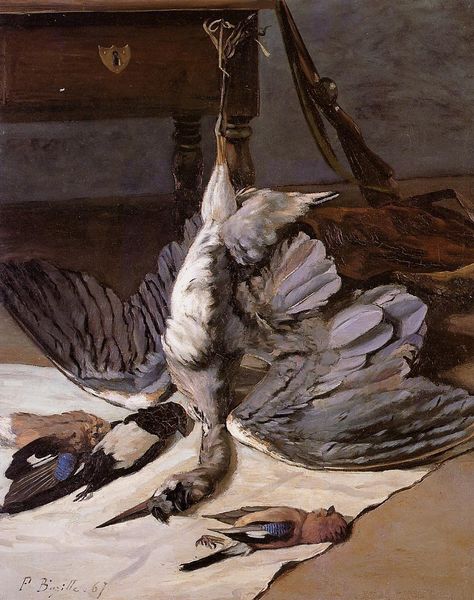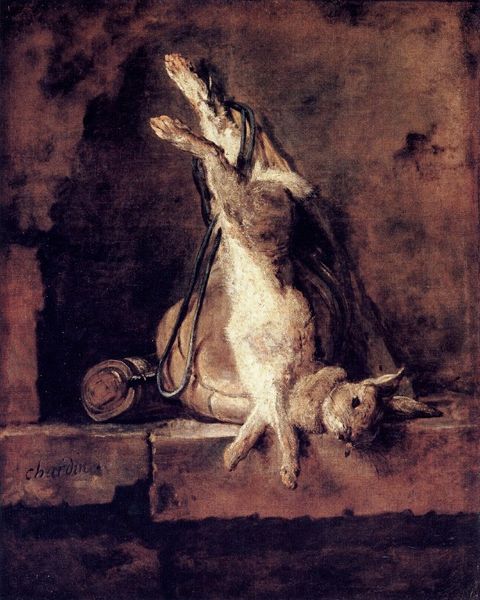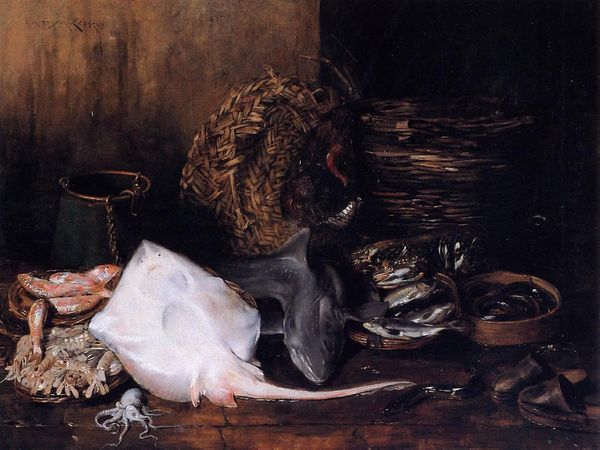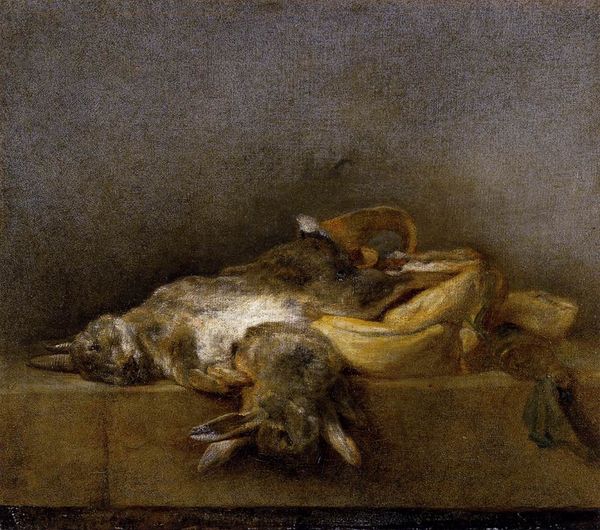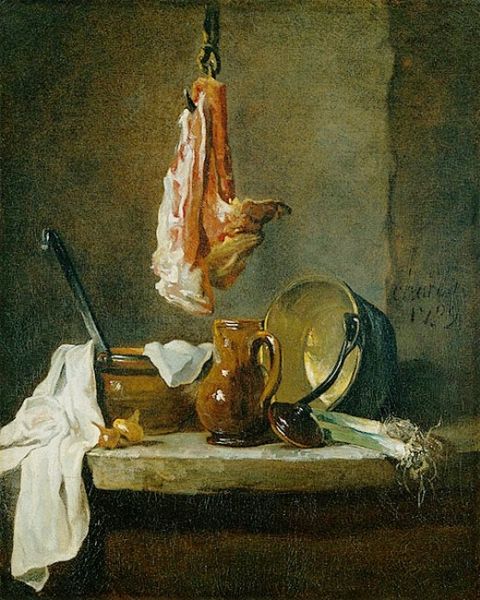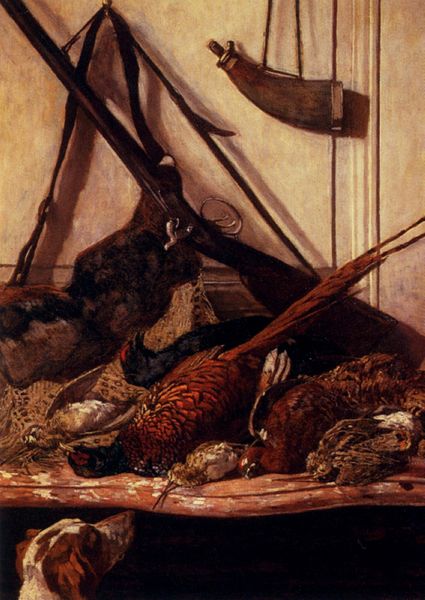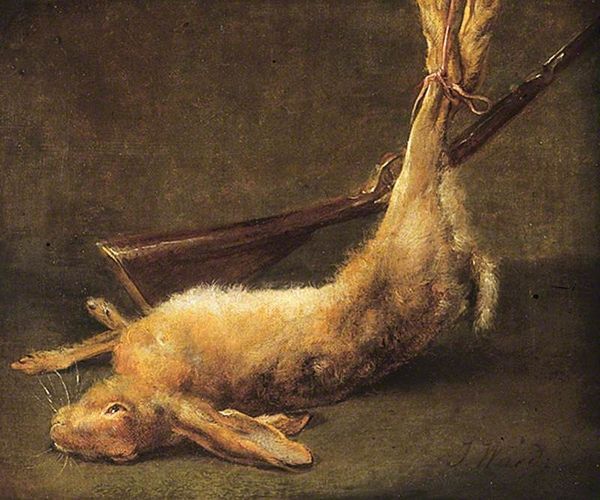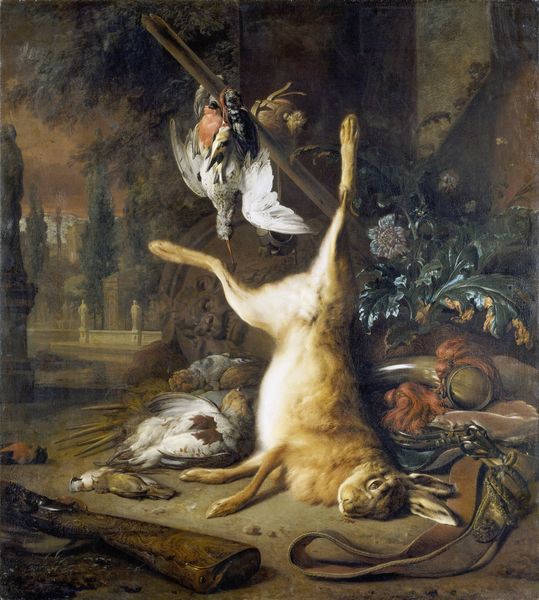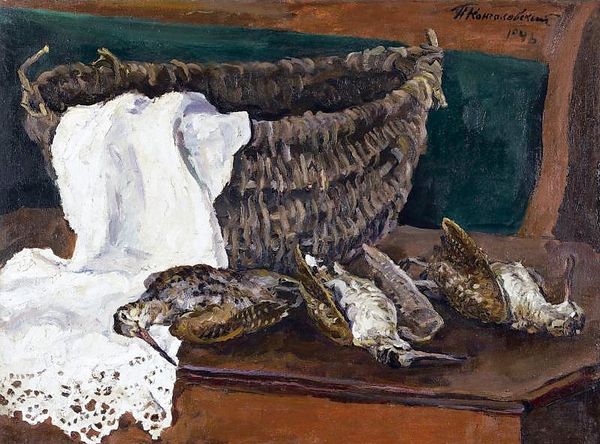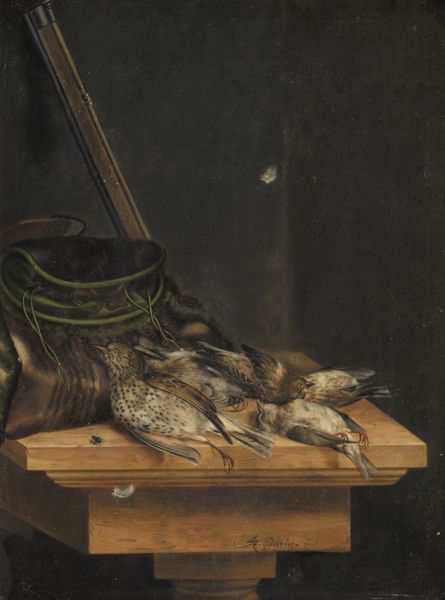
painting, oil-paint
#
painting
#
oil-paint
#
soviet-nonconformist-art
#
oil painting
#
genre-painting
#
realism
Dimensions: 102 x 117 cm
Copyright: Pyotr Konchalovsky,Fair Use
Editor: Konchalovsky's "Still Life. Hares and grouse.", painted in 1951 using oil paints. It has this very stark, blunt realism that is typical for his time. It's... undeniably about hunting. What social messages were common in this sort of subject matter during Soviet Nonconformist Art? Curator: That’s a very astute observation! While termed "Nonconformist," it existed within a complex, politically charged ecosystem. "Still Life. Hares and grouse" depicts a scene of successful hunting, visually aligning with the promoted imagery of provision and bounty during the post-war Soviet era. What do you notice about the composition itself? Editor: Well, there's definitely an emphasis on displaying hunting paraphernalia. It almost feels like an inventory—here’s the horn, the gun, the ammunition. The dead animals feel almost secondary, if that makes sense. Curator: Precisely! It’s an arranged presentation rather than a celebration of nature, isn't it? We can see here a display reinforcing notions of control over nature, feeding into the era's push for agricultural abundance. What do you think the average Soviet citizen’s reaction to seeing it might have been at that time? Editor: Pride maybe? To see that there was, theoretically, success in these areas. I can see how, without being overt, the art serves more as visual reassurance. Curator: Exactly! By showcasing elements that represent a level of sustenance, Konchalovsky’s painting speaks more profoundly to its historical moment than simply illustrating the spoils of a hunt. Editor: That’s really fascinating. I never considered art like this could be doing more than what you initially see. Curator: The socio-political conditions truly seep into all facets of creative production. I am so glad to be able to give that perspective.
Comments
No comments
Be the first to comment and join the conversation on the ultimate creative platform.
